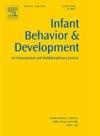妊娠期糖尿病暴露的足月婴儿的早期自发运动。
IF 2
3区 心理学
Q3 PSYCHOLOGY, DEVELOPMENTAL
引用次数: 0
摘要
背景:妊娠期糖尿病(GDM)可能影响胎儿神经发育,早期运动评估有助于在临床症状出现之前识别出高危婴儿。目的:探讨GDM母亲所生足月婴儿的早期自发运动。方法:将32例产前暴露于GDM的足月婴儿和32例年龄匹配的健康对照纳入病例对照研究。在记录母婴人口统计学和临床特征后,于经后52-54周进行一般运动评估(GMA)录像。进行详细的GMA,并计算每个婴儿的运动最优性评分(MOS)。结果:两组患者躁动正常。两组间的人口统计学或临床特征无显著差异,但gdm暴露组的出生体重更高(p = 0.002)。在调整胎龄、出生体重和治疗方式后,gdm暴露组的MOS总分显著降低(p = 0.038),运动特征亚类也保持显著改变(p = 0.025)。在gdm暴露组中,临床变量与MOS之间未发现显著关联。结论:这些发现提示宫内高血糖可能对GDM母亲的婴儿早期运动发育有微妙但可测量的影响。改变的运动特征和较低的调整后的MOS评分突出了这一人群的潜在脆弱性,即使在没有大运动障碍的情况下。通过GMA早期发现这些变化可能有助于确定那些可以从密切的发育监测和及时干预中受益的婴儿,从而支持更好的长期结果。本文章由计算机程序翻译,如有差异,请以英文原文为准。
Early spontaneous movements in full-term infants exposed to gestational diabetes mellitus
Background
Gestational diabetes mellitus (GDM) may influence fetal neurodevelopment, and early motor assessments could help identify at-risk infants before clinical symptoms emerge.
Aim
To examine early spontaneous movements in full-term infants born to mothers with GDM.
Method
Thirty-two full-term infants with prenatal exposure to GDM and 32 age-matched healthy controls were included in this case-control study. After recording maternal and infant demographic and clinical characteristics, video recordings were obtained for General Movements Assessment (GMA) at 52–54 weeks postmenstrual age. Detailed GMA was performed, and the Motor Optimality Score (MOS) was calculated for each infant.
Results
Fidgety movements were observed as normal in both groups. There were no significant differences between the groups in demographic or clinical characteristics, except for birth weight, which was higher in the GDM-exposed group (p = 0.002). After adjusting for gestational age, birth weight, and treatment modality, total MOS scores were significantly lower in the GDM-exposed group (p = 0.038), and the movement character subcategory also remained significantly altered (p = 0.025). No significant associations were found between clinical variables and MOS within the GDM-exposed group.
Conclusion
These findings suggest that intrauterine hyperglycemia may have subtle but measurable effects on early motor development in infants of mothers with GDM. Altered movement character and lower adjusted MOS scores highlight the potential vulnerability of this population, even in the absence of gross motor impairment. Early detection of such changes through GMA may help identify infants who could benefit from close developmental monitoring and timely intervention, thereby supporting better long-term outcomes.
求助全文
通过发布文献求助,成功后即可免费获取论文全文。
去求助
来源期刊

Infant Behavior & Development
PSYCHOLOGY, DEVELOPMENTAL-
CiteScore
4.10
自引率
4.80%
发文量
94
期刊介绍:
Infant Behavior & Development publishes empirical (fundamental and clinical), theoretical, methodological and review papers. Brief reports dealing with behavioral development during infancy (up to 3 years) will also be considered. Papers of an inter- and multidisciplinary nature, for example neuroscience, non-linear dynamics and modelling approaches, are particularly encouraged. Areas covered by the journal include cognitive development, emotional development, perception, perception-action coupling, motor development and socialisation.
 求助内容:
求助内容: 应助结果提醒方式:
应助结果提醒方式:


